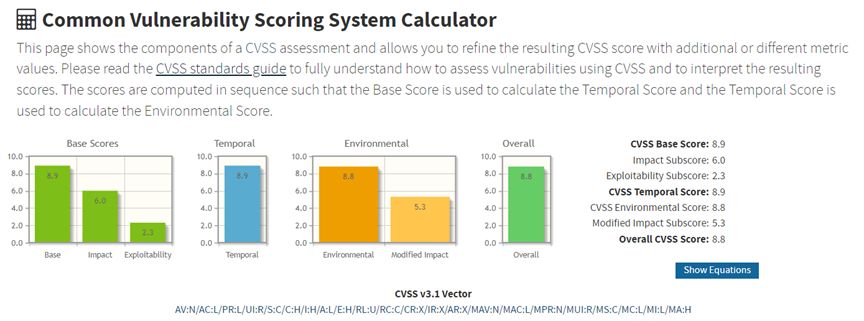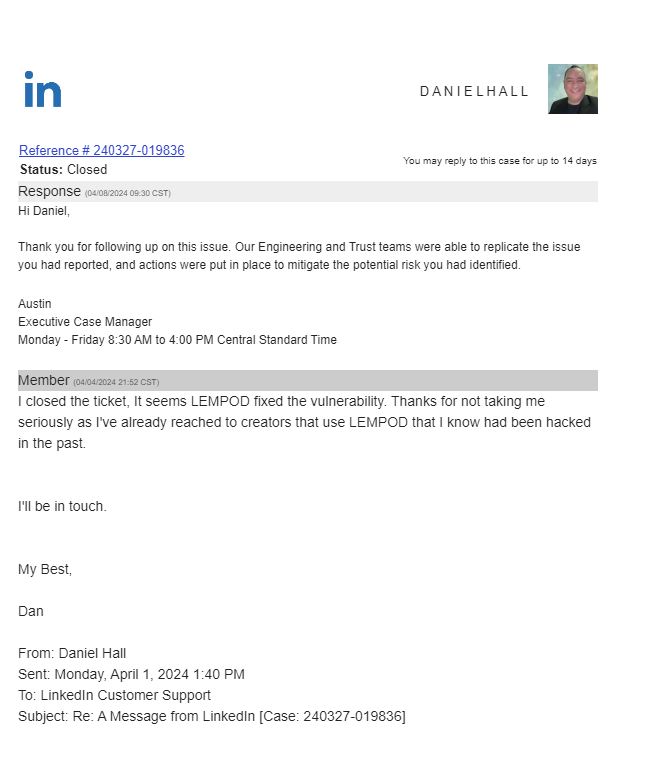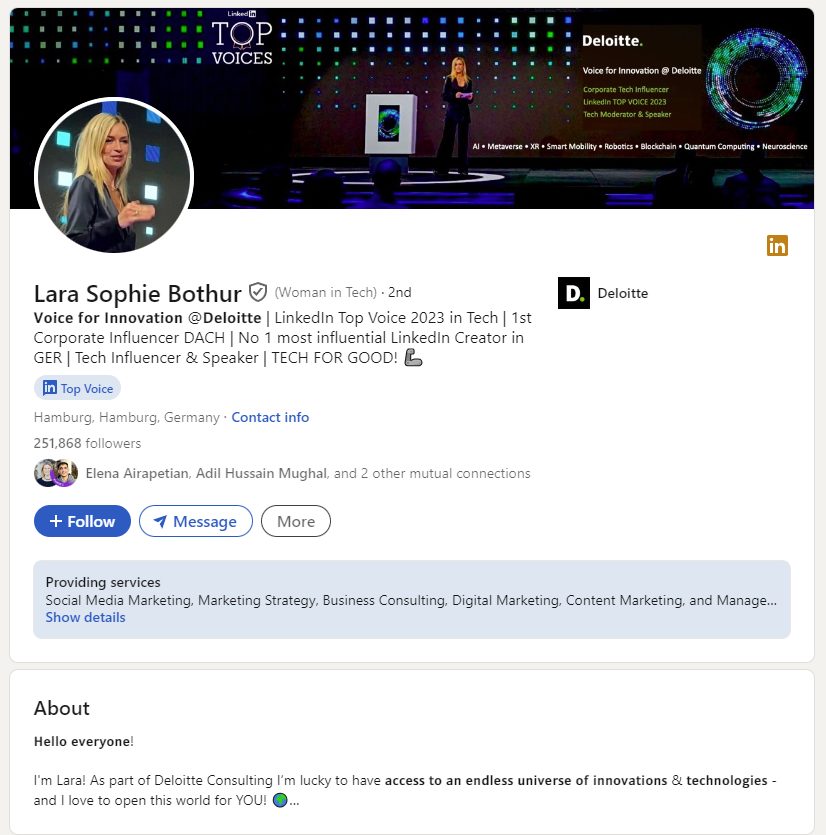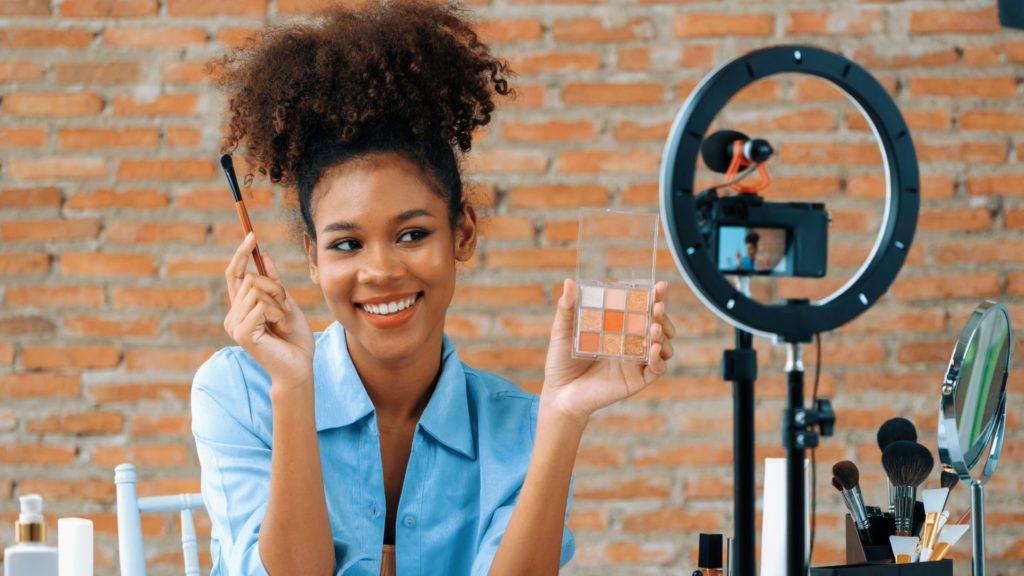Building your brand organically is hard work.
Gaining traction with your content creation on social media platforms like LinkedIn and Instagram is critical for natural organic growth. However, social media engagement is a double-edged sword. It’s that elusive metric businesses of all sizes chase to gain more visibility in the feed.
It requires a solid content strategy and a commitment to high-quality content that intrigues your ideal customer. If you’re not educating and entertaining your readers regularly, your content will fall flatter than a loaf of homemade bread made from a recipe that skips the yeast.
Organic growth is slow and steady when done the right way. It can take months before you gain followers and begin seeing meaningful interactions on your posts. Some people lack the patience to put in the hard work and try to fast-forward to the reward instead.
For others, the lure of influencer fame is so great – their vanity so deep – they cross to the dark side of social media and join an engagement pod.
What the heck is an engagement pod?
Social media engagement pods are private groups of members who agree to consistently like, comment, and share each other’s content. Pods are nothing new on Instagram. However, they seem to be gaining steam on LinkedIn as users vie for industry leader status to boost their bottom lines.
Pods can be small and niche to larger groups consisting of thousands of members who have nothing else in common save for their desire to game the algorithm.
The idea behind this hack is that mutual support will trick social media algorithms into boosting your reach and engagement. When you sign up for a pod, you agree to spend countless hours liking, sharing, and leaving generic comments on other pod members’ posts.

Why are social media engagement pods bad news for your brand?
So, what’s wrong with that?
Plenty.
Of least concern is the fact that social media engagement pods artificially increase your engagement. All those likes, shares, and comments may get eyeballs on your content, but are they the right eyeballs for growing your brand? Highly unlikely.
It’s also time-consuming to spend all your time on social platforms engaging with posts you neither find interesting nor valuable. What often ends up happening is you’ll see posts with thousands of “great post” or “thanks for posting” comments from pod participants that leave a bad taste in the mouths of non-pod people who discover your content.
An annoying side effect of hanging out in engagement pods is you’re skewing your algorithm. Regularly engaging with posts that serve no purpose for building your brand will clog your social media feed with junk content.
By far the worst reason social media engagement pods are bad news for your brand is because they make it easier for hackers to gain control of your social media accounts. It’s this scary scenario that prompted data analytics expert Daniel Hall to launch the Spot A Pod social media campaign on LinkedIn to expose the hidden dangers of pods.
Lempod vulnerability uncovered
One of the most popular engagement pods for LinkedIn users is Lempod. The LinkedIn automation tool allows Lempod users to automatically like and comment on each other’s posts. It promises “tons of LinkedIn post views” that encourage the platform to boost your posts “to an audience of people who liked your content,” according to Lempod’s website.
Lempod was founded by Guillaume Moubeche in 2018. He successfully exited the company after 18 months at the helm to focus on his other business, lemlist. However, the company continues to sell its services to LinkedIn users eager to skip to the front of the popularity line.
Recently, Hall discovered a vulnerability in the Lempod software that allowed hackers to gain access to your LinkedIn credentials and then use them to hijack your account. Once inside, hackers could bypass Lempod’s tracking security protocol to glean and manipulate all sorts of useful information about LinkedIn users. “Imagine giving your keys to a valet who parks your car in a lot,” said Hall. “A stranger tells the valet his car is in the same lot yours is in, so the valet gives him the keys to all the cars in that lot. In this case, all the logins to everyone’s LinkedIn account in the pod were given away.”
With more than 10,000 Lempod users and more than a billion members on LinkedIn, Hall called the scope and severity of the breach alarming. He alerted LinkedIn’s customer support, which validated the issue. You can see their response to him below.

“Any time you connect your LinkedIn account to a pod or Chrome extension, you may be giving them full access to control your account to act on your behalf,” said Hall.
As of April 9, LinkedIn confirmed the vulnerability and took steps to prevent hackers from using it to further access the platform. However, this is just one of the many risks pod users face when they willingly hand over their account access to engagement pods, said Hall.
Engagement pods ruin your reputation
Making your social media accounts vulnerable to hacking is certainly one of the more serious consequences of using engagement pods. Ruining your professional reputation is the other.
To show the damage that pods can do to your character, Hall occasionally creates what he calls “fake news” posts and then submits them to engagement pods requesting members help boost them with comments, likes, and shares. In one of these recent fake news posts, Hall kept the original article but changed a few numbers in his post, making it obvious to any human who read the article and his post promoting it that something was off.
“Before long, over 200 creators that had no clue they even engaged with a fake news post helped to spread the fake news by being in a pod,” he said. “You’re using a firehose approach to generating business, hoping maybe one or two of those people will engage with you. But at the end of the day, people are going to see through those fake reactions, and it’ll be like a watermark of deception for them.”
How do you identify social media engagement pod users?
It doesn’t take a rocket scientist – or in this case, a data analyst – to identify a pod user. Hall said one of the tell-tale signs is easy for anyone to spot. “The devil is in the details,” Hall said. “You’ll see a post that quickly gains traction with very few followers, sometimes with new comments within seconds of each other.”
Seeing the exact comment from multiple users is another clue the poster is using a pod to artificially boost their content. Lempod makes it easy for its pod users to choose from a list of AI-generated comments its chatbots can use to interact with other pod members’ posts.
Hall has studied pod behavior on LinkedIn since 2020. He created a proprietary algorithm that measures how much time users spend in the comments of social media posts engaging with each other. After its creation, Hall realized he could use the software to download comments from live streams on LinkedIn to identify chatbots conversing on posts. “It was eye-opening,” he said. “It showed the platform was riddled with bots talking to themselves.”
Launching SPOTAPOD
Hall decided to go all-in on his quest to expose the prevalent use of social media engagement pods on LinkedIn. He joined thousands of pods to study them from the inside and collect data to support his findings.
In October 2023, Hall began exposing content creators on LinkedIn for whom he had the receipts of pod activity. “At first, I was just calling them out, and people were like, ‘Nah, this isn’t real,’” he said. “So, I started displaying data and images of the people from the pod platform since I had the evidence of their participation in pods. People have called pods out before, but nobody’s ever really shown the proof. I did.”
Hall has a list of over 200 LinkedIn creators he’s found in engagement pods. His biggest pet peeve is LinkedIn users who sell engagement systems to others who hope to achieve the same success on LinkedIn without knowing their idols are getting their fake engagement numbers through pod participation.
Even worse, sometimes unsuspecting LinkedIn users hand over access to their accounts to content marketing agencies and individual consultants to help them grow their brands. Those providers submit their clients’ details to engagement pods to artificially boost engagement and visibility without the person’s consent.
Hall has taken quite a bit of heat for his crusade. He’s even had pod users he’s exposed private message him to say they’ve lost business after clients saw his posts about them.
“For me, it’s not about targeting anybody,” said Hall. “It’s about trying to put the human back in humanity.”

How do social media influencers use engagement pods?
Social media influencers are a popular marketing strategy for businesses interested in expanding their reach and engagement online. They use influencers to create and share branded content to promote their products or services to their followers. Companies gravitate toward influencers in their industry with a large audience full of potential customers for their brand.
According to data from Statista, nearly 70% of U.S. marketers in companies with more than 100 employees used influencers as part of their marketing efforts.
Earlier this year, corporate influencer Lara Sophie Bothur was called out by Hall and others for reach manipulation on her LinkedIn account using engagement pods. These data experts pointed to evidence of aids to inorganically increase reach that included constant linear follower growth of 1,000 profiles per day and external engagement rates in the double digits.
Bothur’s employer, Deloitte, denied the allegations.
Online magazine t3n provided an in-depth report on the incident. Investigative reporter Andreas Weck reached out to LinkedIn because Bothur is part of the platform’s Top Voices program. LinkedIn told Weck that its team didn’t identify any irregularities with Bothur’s account.
During its investigation, t3n noted that profiles and their comments disappeared from LinkedIn, including duplicate comments that its editorial team identified as evidence of pod engagement. Hall said he recorded similar extensive deletions after Bothur’s account was called out. “Every time I drop comments, they mysteriously go missing from the platform,” he said.
When marketers use engagement pods
Hall cautioned against assuming the people behind the profiles on LinkedIn caught using engagement pods knew of their involvement. Unfortunately, some marketing agencies and consultants specializing in content creation for social media growth place their clients in pods without their knowledge or consent.
“They sometimes put unsuspecting creators into these pods when they seek out services with them,” said Hall. “They unleash pods on your content when you’re a client and you don’t know it. So, it looks good, and you think you’re getting what you paid for but you’re really not. It’s all an illusion created by pods.”
The Write Reflection reached out to two creators on LinkedIn who were placed in engagement pods by a marketing agency without their knowledge. Neither responded to requests for an interview.

What’s the right way to increase social media engagement?
It’s not difficult to understand why pod use is on the rise across all social media platforms. They promise a quick rise to fame. But as any reputable content marketing professional will tell you, slow and steady wins the race.
The key to organic growth is consistently providing value, nurturing genuine connections, and adapting your approach based on audience feedback. Yes, it’s time-consuming. Yes, it requires effort. But social media engagement hacks like engagement pods set you up for failure in the long run.
Instead, try these practical tips that help your brand expand its reach naturally while building mutually beneficial relationships.
Create valuable and engaging content
Focus on producing high-quality content that educates, entertains, and visually appeals to your ideal customer. Mix up different content formats – photos, videos, stories, live streams, and carousels – to keep it interesting. Don’t be afraid to show the faces of the people behind your brand. People connect with people, not corporate identities.
Encourage user-generated content
One of the most effective ways to get your followers invested in your brand is to run contests, giveaways, and campaigns that inspire them to create and share content that features your products or services. Repost and engage with their content to build a sense of community and show your appreciation. This technique is part of the kind of genuine relationship-building that gives brands staying power on social.
Collaborate with complementary brands
There’s room for everyone to succeed on social media. Finding a complementary brand and partnering with them to reach each other’s audiences through co-created content, takeovers, or cross-promotion is a fun way to encourage organic engagement. Followers crave these kinds of collaborations on social media because they’re authentic and fun. Before you engage in this kind of partnership, verify the other business aligns with your brand values.
The bottom line on social media engagement pods
Social media engagement pods are a short-sighted solution that won’t lead to sustainable, organic growth for your brand.
Instead of relying on artificial engagement, focus your efforts on creating genuinely valuable content, building authentic relationships with your ideal customers, and using ethical marketing strategies and tools to reach more of the people who matter most.


I’ve learned a lot about email marketing digital marketing integration from your blog.
Thank you! We’re glad you find it helpful!